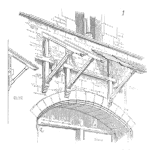
A recent LinkedIn discussion addressed the question of the best strategy for dealing with poor supplier performance.
A lot of the respondents seemed to advocate a punitive approach, either threatening the loss of future business if performance doesn’t improve, or combing through the terms & conditions of the contract for enforcement language.
I’ve always thought that there’s a lot of similarity between managing suppliers and managing subordinates, and I wonder if some of these same people threaten their teams with punitive actions when individual performance doesn’t meet expectations. [Read more…]















 Ask a question or send along a comment.
Please login to view and use the contact form.
Ask a question or send along a comment.
Please login to view and use the contact form.